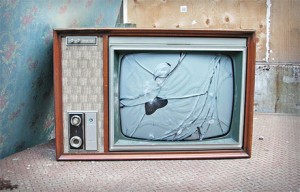TV – the social media
In the last few years, some commentators have predicted the death of television, some even championed it, declaring that it was obsolete – superseded by interactive media that offer true user participation. They cite massive user figures for the likes of Facebook, World of Warcraft as evidence that traditional media is on it’s way out. Linked with data that charts a declining number of viewer hours, it is a compelling case. But assertions of the imminent demise of broadcast media may be premature.
Last weekend, 20 million people in the UK watched the final of X-factor. It followed a week of Coronation Street where more than 10 million viewers tuned in for every episode. Tonight millions are watching the finale of The Apprentice. By anyone’s measure they are impressive numbers.
However, it isn’t the figures that make broadcast remarkable – it is the event it becomes. All the criticisms of linear media – the lack of viewing control, the fixed presentation, the dictated sequencing – are precisely the aspects that continue to endear the format to the masses. Sometimes, and particularly after a day at work/ school/ activity of any kind, we don’t want to ‘sing for our supper’, we just want to sit back and be entertained. In these circumstances, we want to be spoon-fed high quality, low effort content. Don’t get me wrong, I don’t mean mindless, senseless, emotionless programming (although arguably even that has its place) rather we want to envelop ourselves in the creativity of media producers that are better than us. It’s not just the luxury of revelling in expert craft that makes it valuable to us – it’s the knowledge that others are having the same experience (if not in the same place, at least at the same time).
Newer media lacks a defining moment. Although benefitting from the long tail which accumulates many users over time, each instance sits is a separate fragment of time. It means that everyone has a uniquely individual experience.
Where television continues to dominate is as the basis for next-day conversation. It is the preeminent catalyst for workplace/ classroom discussion because it provides a shared reference.
There are tremendous opportunities for simultaneous narrative and two-screen experiences but for the time being, television remains the social media.

